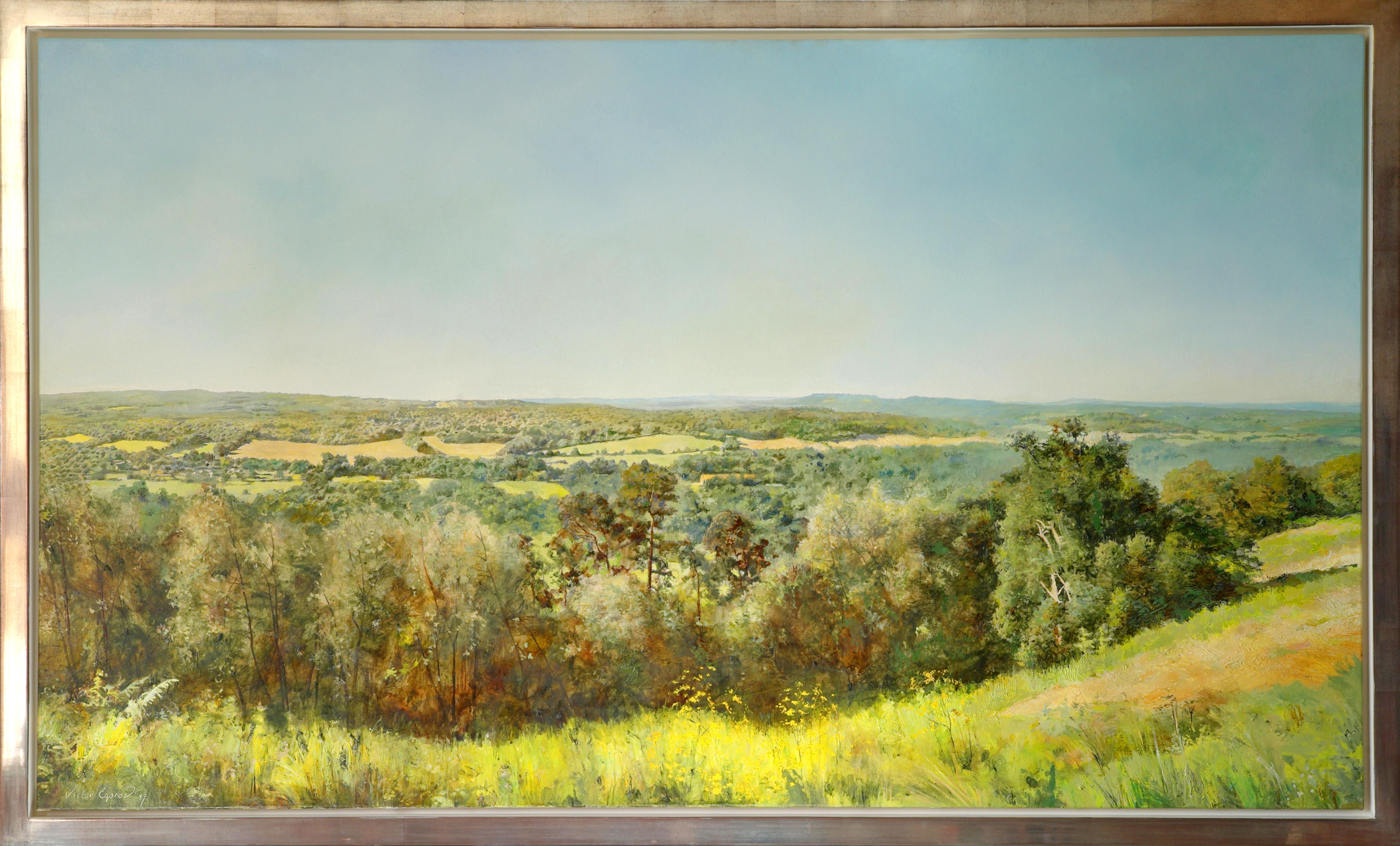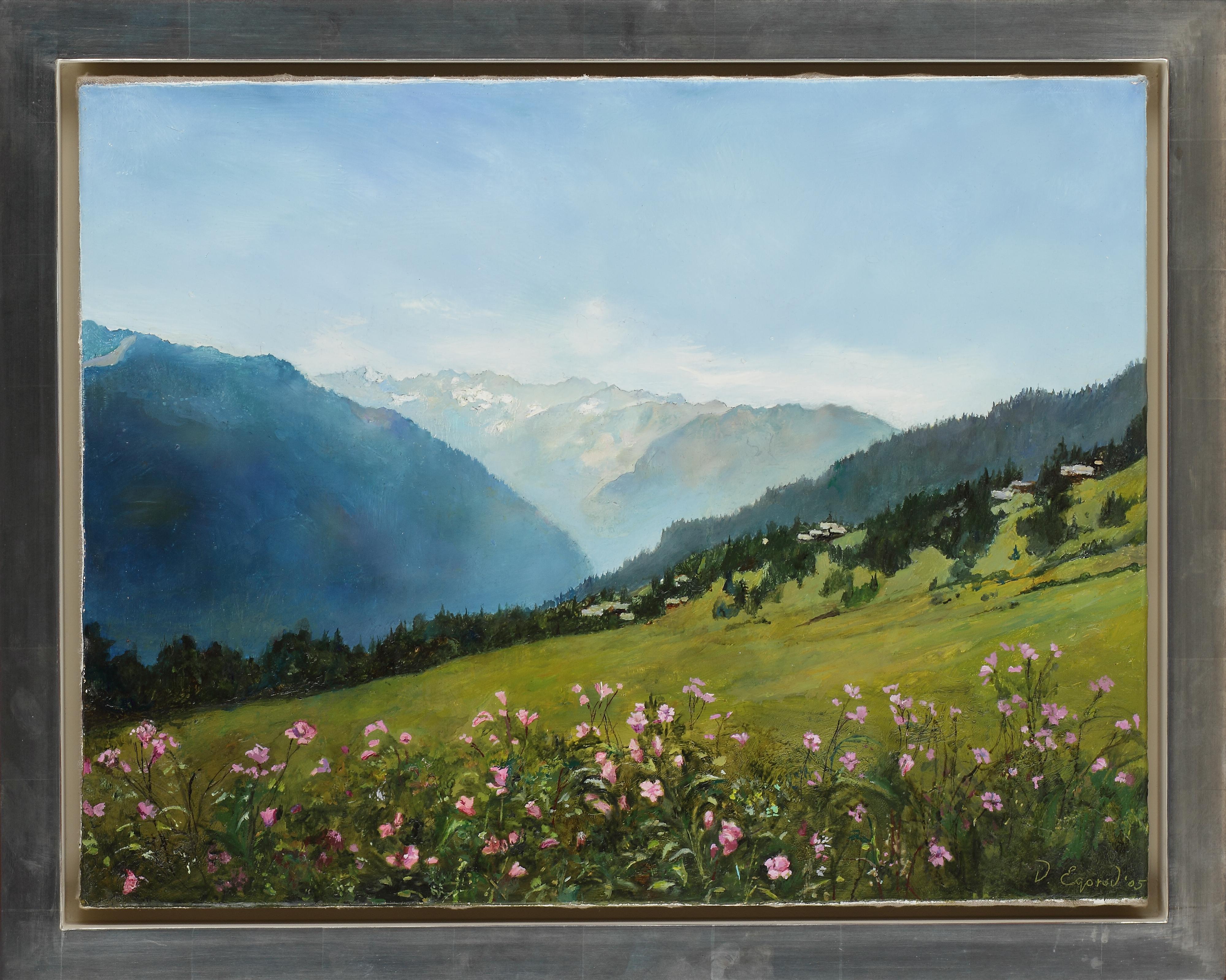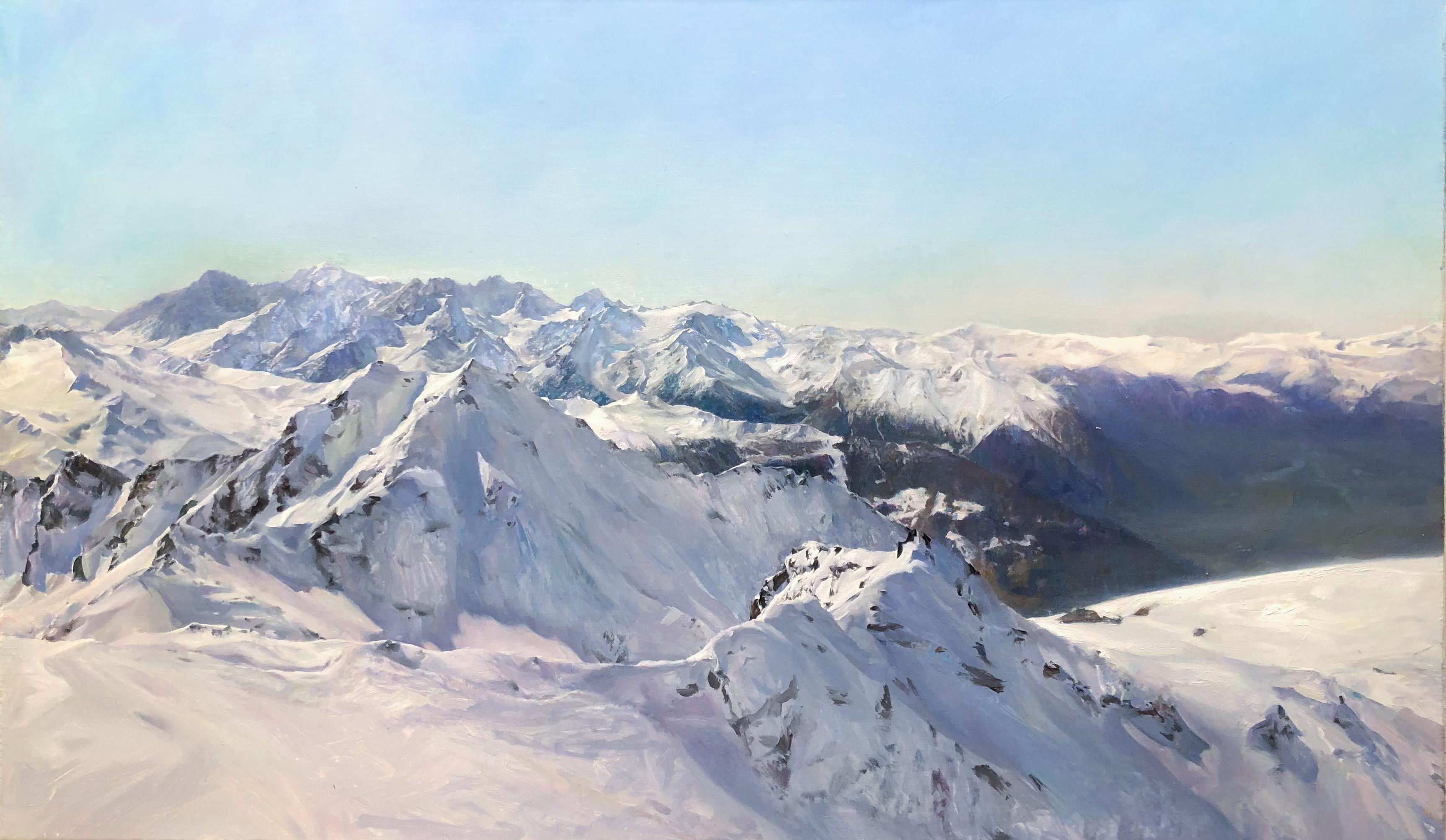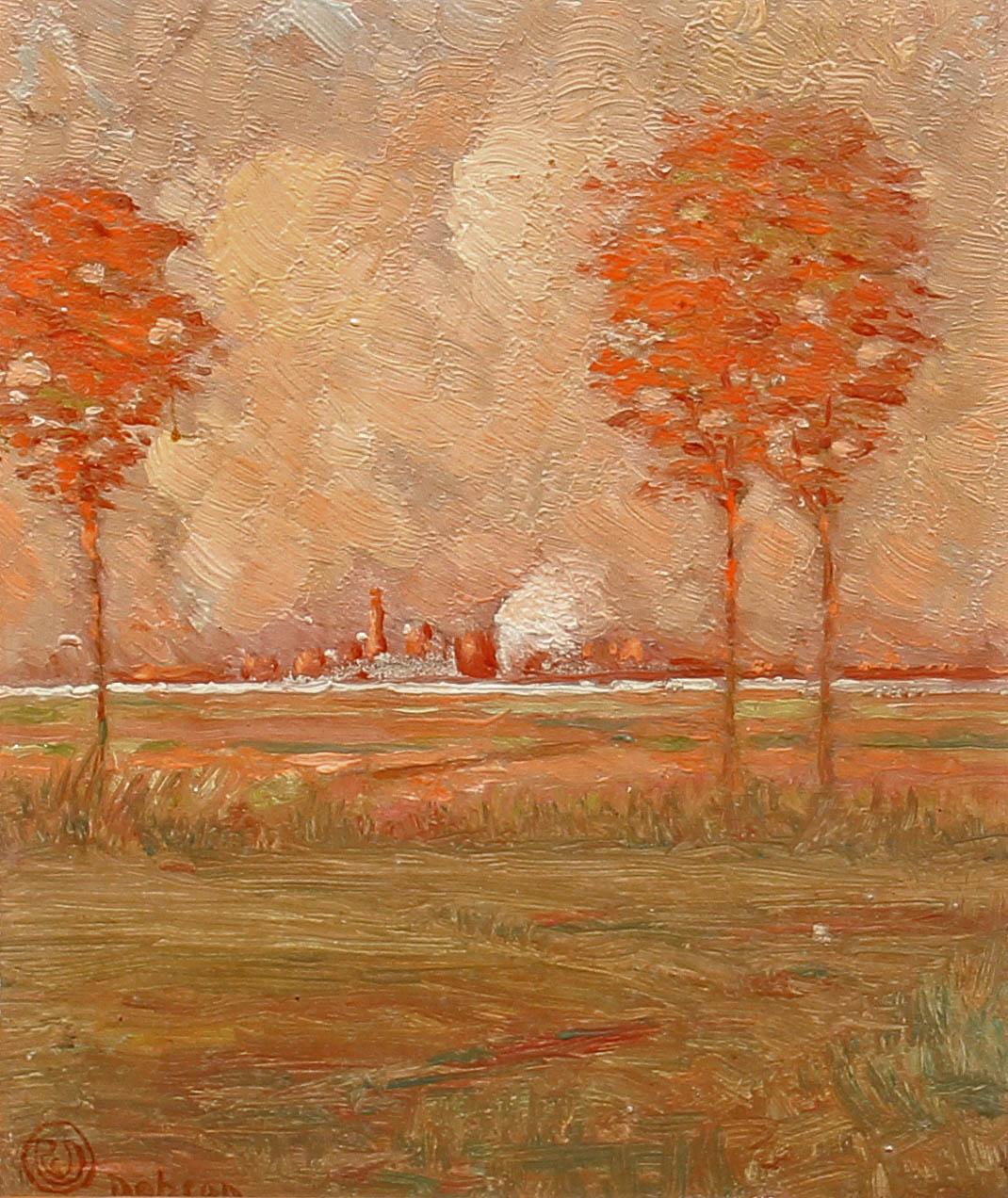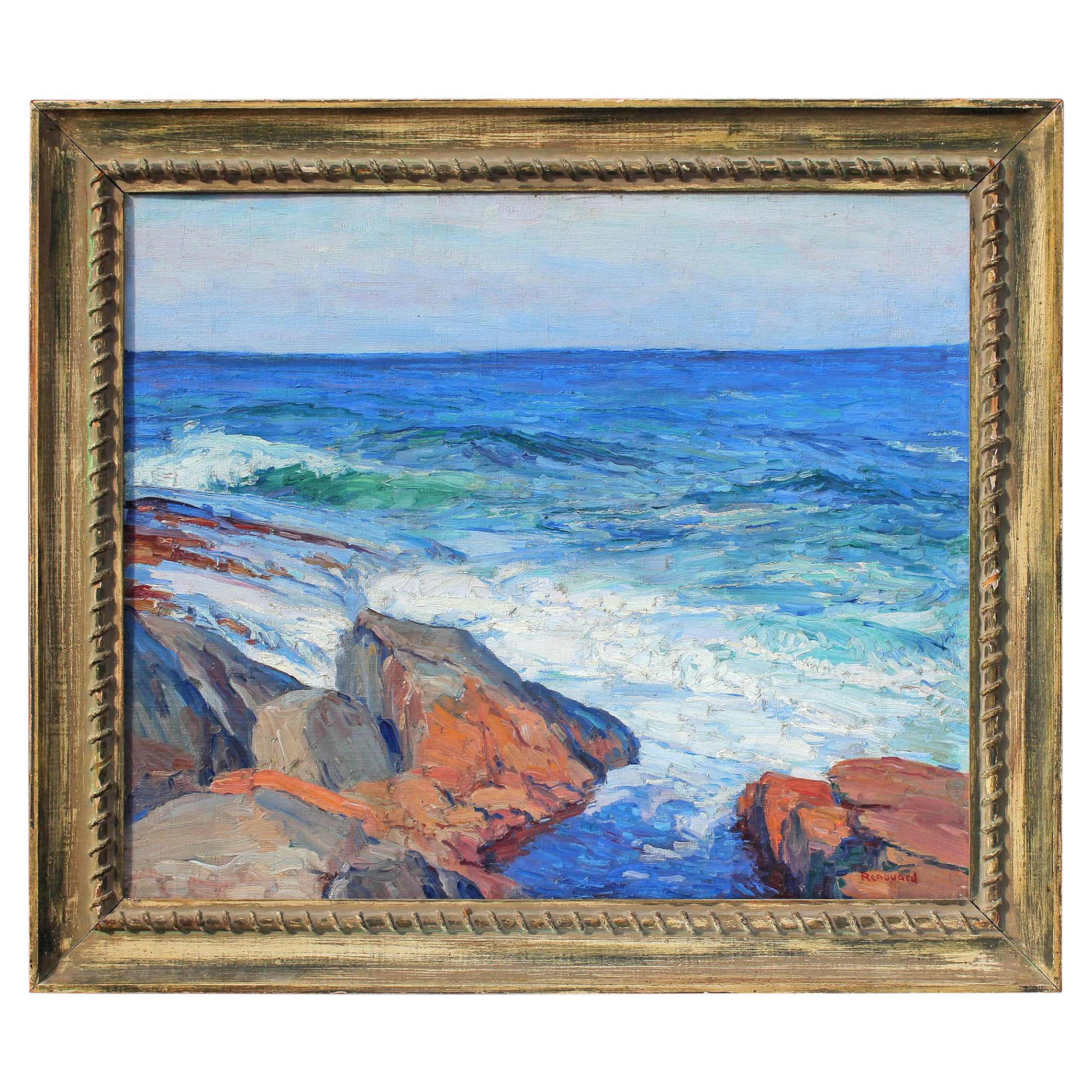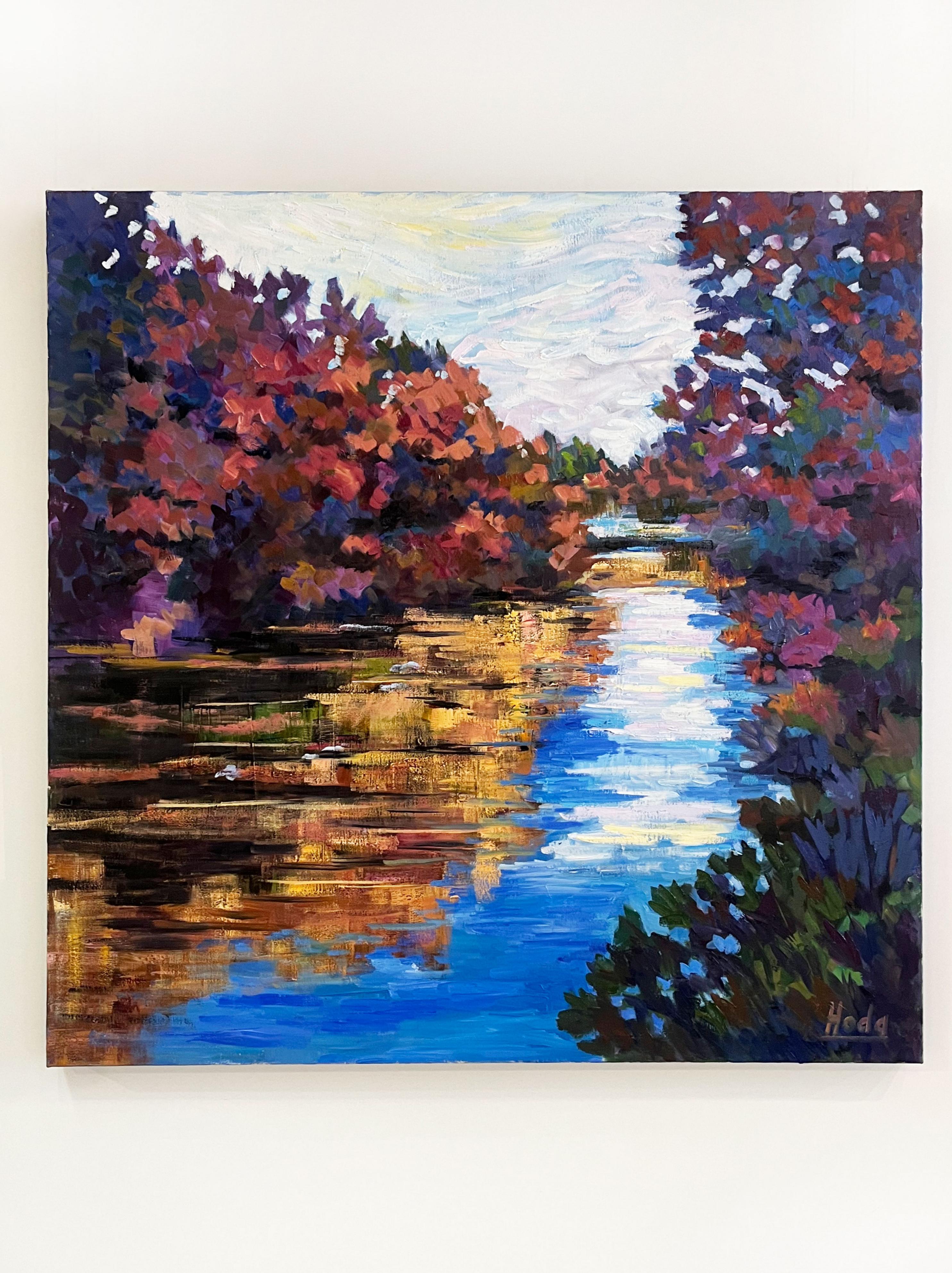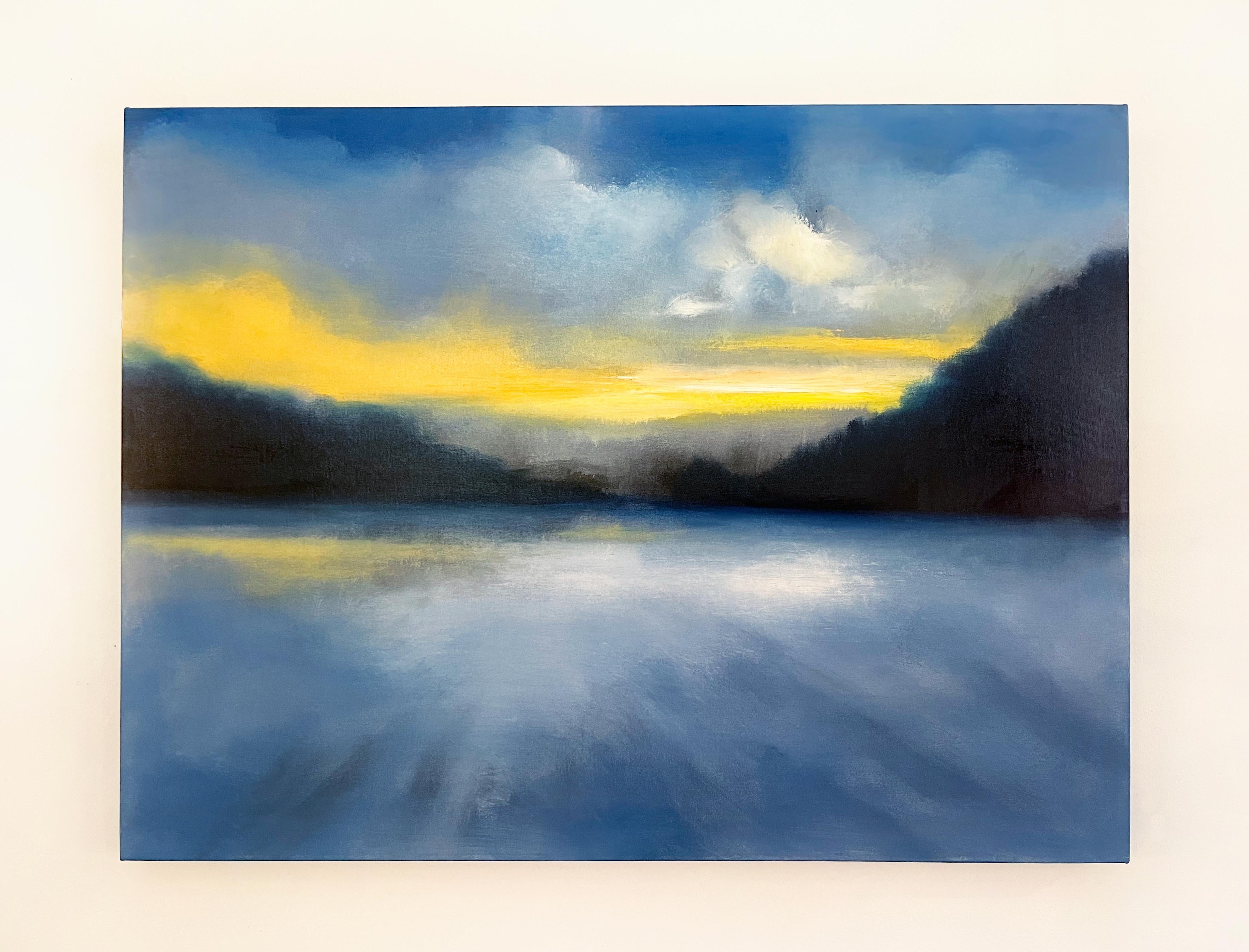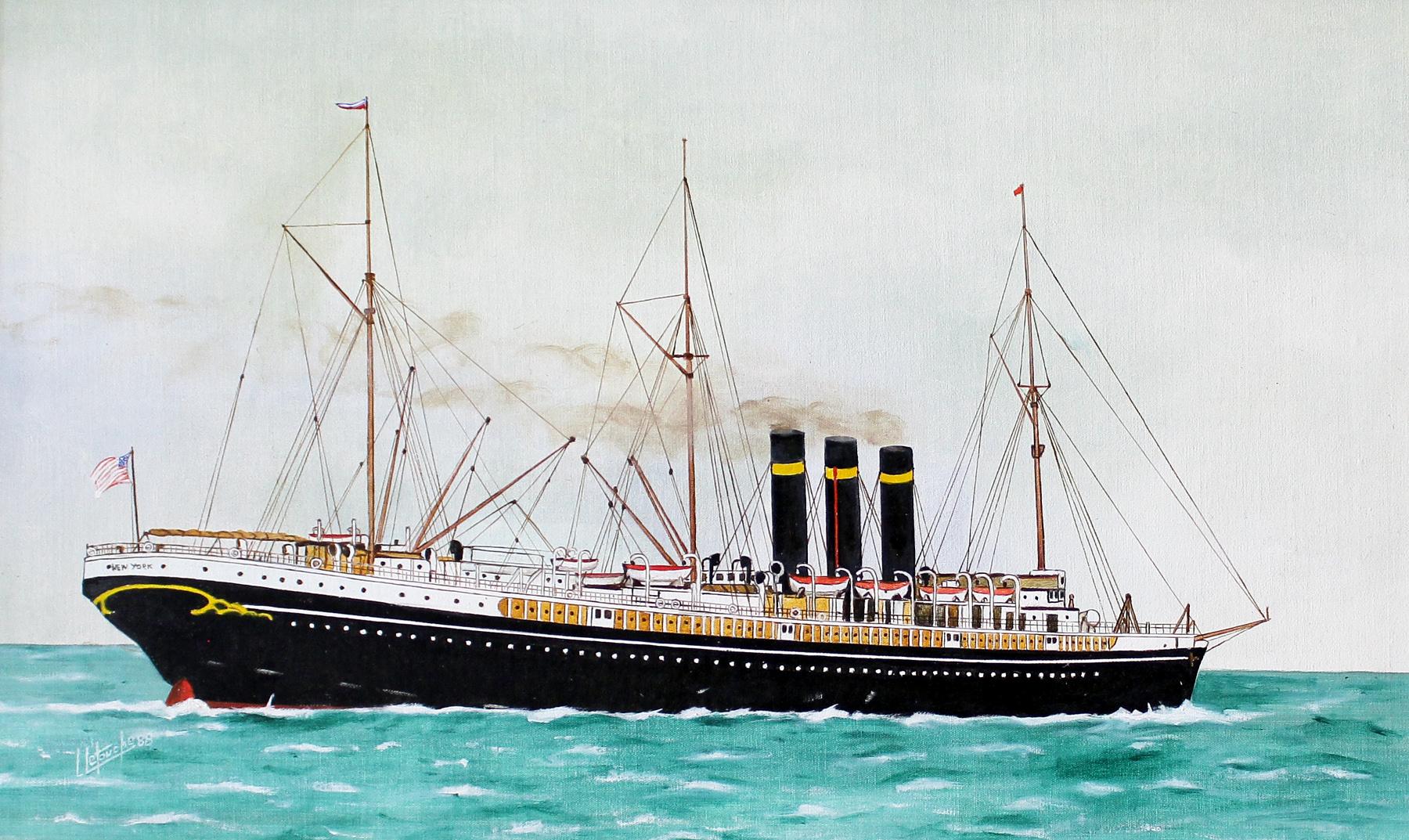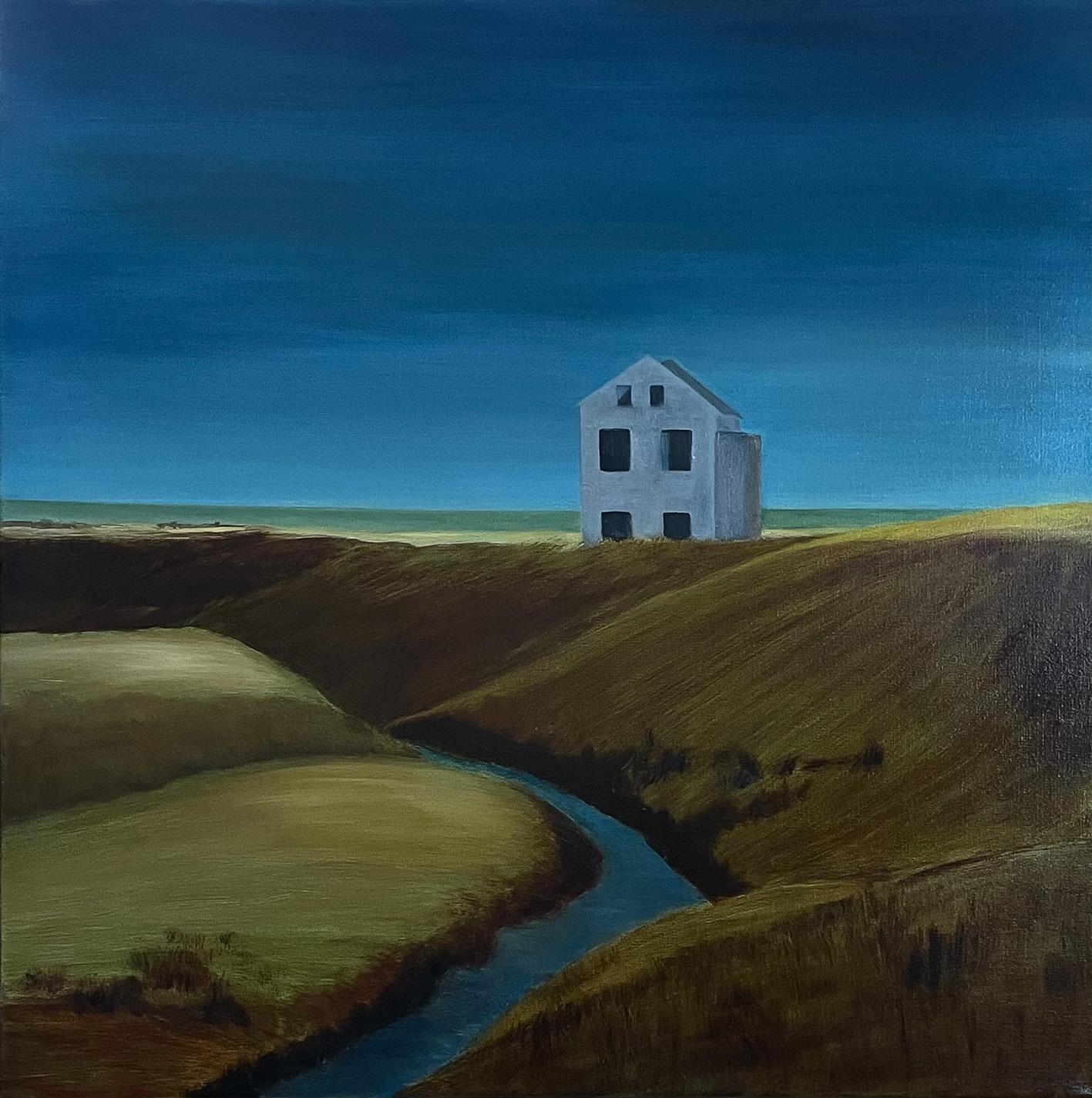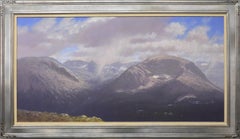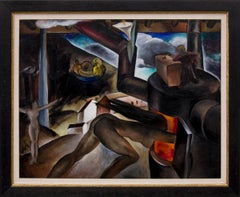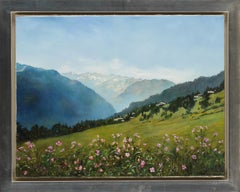
Granite Barriers (Near Colorado Springs/Manitou Colorado)
View Similar Items
Want more images or videos?
Request additional images or videos from the seller
1 of 8
John F. CarlsonGranite Barriers (Near Colorado Springs/Manitou Colorado)circa 1920
circa 1920
About the Item
- Creator:John F. Carlson (1875 - 1947, American)
- Creation Year:circa 1920
- Dimensions:Height: 18.25 in (46.36 cm)Width: 22.25 in (56.52 cm)Depth: 1.5 in (3.81 cm)
- Medium:
- Period:
- Condition:
- Gallery Location:Denver, CO
- Reference Number:Seller: 147911stDibs: LU273312562
About the Seller
5.0
Platinum Seller
These expertly vetted sellers are 1stDibs' most experienced sellers and are rated highest by our customers.
Established in 1979
1stDibs seller since 2013
265 sales on 1stDibs
Typical response time: 3 hours
More From This SellerView All
- Colorado Mountain Town, Framed Summer Modernist Landscape Oil PaintingBy Doris LeeLocated in Denver, COOil on board painting by Doris Emrick Lee of a Colorado mountain town landscape in the summer time. Landscape including houses, roads, and telephone poll...Category
20th Century American Modern Landscape Paintings
MaterialsOil
- Terra Tomah Mountain, Rocky Mountain National Park, Colorado, Landscape PaintingLocated in Denver, COOil painting on linen by Denver artist Raymond Knaub (born 1940) titled "Terra Tomah Mountain - Rocky Mountain National Park, Colorado". Presented in a c...Category
20th Century American Realist Landscape Paintings
MaterialsLinen, Oil
- Surrealist Female Nude in Industrial Landscape Oil Painting, 1930s ModernBy Virginia TrueLocated in Denver, COOil on board. Surrealist/Modernist painting with a female nude reaching into a wood burning stove, hilly landscape with barn, houses, still life with a bowl of fruit, stormy sky and a small male figure. Presented in a custom frame, outer dimensions measure 29 ¼ x 35 x ¾ inches. Image size is 24 ¼ x 30 inches. Provenance: Private Collection, Colorado About the Artist: The daughter of a classically-trained pianist mother and a concert violinist father, she had an intellectually stimulating upbringing enhanced by Christian Science values. After graduation from high school in Hannibal, Missouri, she enrolled in the College of Education at Butler University in Indianapolis, Indiana in 1919. Soon, however, she gave up the idea of becoming a teacher and entered at the John Herron Art Institute (whose collections are now part of the Indianapolis Museum of Art). The Institute’s early faculty included artists from the Hoosier Group trained at the Royal Academy in Munich, Germany, who educated artists in the realist tradition. True’s teacher and mentor, William Forsyth, gave her an excellent foundation in drawing and the technical aspects of painting and composition. When the failure of her father’s business in the early 1920s forced her to start earning a living, the Herron Institute hired her as an instructor for its art school, allowing her to support herself while she finished her studies. Following graduation from the Institute in 1925, she received a one-year scholarship to the Pennsylvania Academy of the Fine Arts in Philadelphia. Her former teacher William Forsyth wrote in his recommendation: "I can say without exaggeration that she was one of the best pupils I ever had during the twenty-five years I was a teacher at the John Herron Art School." At the Academy, she studied with Daniel Garber, an impressionist landscape painter associated with the New Hope art colony, and Hugh Breckenridge noted for his bold palette and expressionistic use of color, as well as the abstract work he started doing by 1922. She also studied briefly in the art department at Columbia University, perhaps in1928 when she produced some of her New York street scenes. From Pennsylvania, she returned to Indiana teaching for several years at Shortridge High School in Indianapolis. She also began showing her work at several area venues, including the Herron Institute, the Artists of Indiana, and the Hoosier Salon held early on in Chicago. Among the Salon’s exhibitors were Gustave Baumann, Victor Higgins, and Olive Rush, who either were Indiana natives or whose careers included connections with the state. By the 1920s all three of them had become associated with the Santa Fe and Taos art colonies. In the summer of 1928 True experienced both New Mexico communities and Southwest culture firsthand with Francis Hoar and her husband Clement Trucksess, her friends from the Herron Institute. They had relocated to Boulder in 1927 and were teaching at the University of Colorado. She recorded in her journal her initial reaction to the New Mexico landscape: "Might I preserve on canvas my thrill and deep feeling of the grand things of nature I have beheld today….There’s a wideness in God’s country that expresses peace to me." Inspired by her trip, True created a group of watercolors for her solo exhibition in 1928 at the Lieber Gallery in Indianapolis. They marked a transition from the realist style she learned at the Herron Institute to the more modernist, semi-abstract one she soon adopted. In the summer of 1929, she accepted an instructor’s position on the faculty of the Fine Arts Department at the University of Colorado (CU) in Boulder. She after that joined the Art Association of Boulder founded in 1923 by Mrs. Jean Sherwood, an art patron and club woman who relocated from Chicago to teach at the Boulder Chautauqua. Sherwood helped convince Dean Fred B...Category
1930s Surrealist Figurative Paintings
MaterialsOil
- Near Watsonville, California, Mid Century Landscape Oil Painting House TreesBy Jon BlanchetteLocated in Denver, COMid 20th Century oil on artist board of a white house near Watsonville, California. 1950s landscape painting with house and trees. Presented in a...Category
Mid-20th Century American Modern Landscape Paintings
MaterialsOil, Board
- Sangre de Cristo Scene, Framed Taos New Mexico Mountain Landscape Oil PaintingBy Georgina KlitgaardLocated in Denver, COOriginal signed oil painting by Georgina Klitgaard (1893-1976), a Taos, New Mexico mountain landscape painting with figures walking in a meadow with ...Category
20th Century American Impressionist Landscape Paintings
MaterialsCanvas, Oil
- Autumn Harvest, Original Semi-Abstract Landscape and Figurative Oil PaintingBy Edward MarecakLocated in Denver, COOriginal framed oil painting on burlap by Edward Marecak (1919-1993) titled "Autumn Harvest" from 1987. Signed and dated by the artist in the lower right corner. Presented in a custom framed, outer dimensions measure 20 x 29 x 1 ⅜ inches. Image size is 19 x 28 inches. Provenance: Estate of the Artist, Edward Marecak Painting is clean and in good condition - please contact us for a detailed condition report. Expedited and international shipping is available - please contact us for a quote. About the artist: Born to immigrant parents from the Carpathian region in Slovakia, Marecak grew up with his family in the farming community of Bennett’s Corners, now part of the town of Brunswick, near Cleveland, Ohio. When he turned twelve, his family moved to a multi-ethnic neighborhood of Poles, Czechs, Slovaks, and Slovenians in Cleveland. His childhood household cherished the customs and Slavic folk tales from the Old Country that later strongly influenced his work as a professional artist. During junior high he painted scenery for puppet shows of “Peter and the Wolf,” awakening his interest in art. In his senior year in high school he did Cézanne-inspired watercolors of Ohio barns at seventy-five cents apiece for the National Youth Administration. They earned him a full scholarship to the Cleveland Institute of Art (1938-1942) where he studied with Henry George Keller whose work was included in the 1913 New York Armory Show. In 1940 Marecak also taught at the Museum School of the Cleveland Institute. Before being drafted into the military in 1942, he briefly attended the Cranbrook Academy of Art near Detroit, one of the nation’s leading graduate schools of art, architecture, and design. A center of innovative work in architecture, art and design with an educational approach built on a mentorship model, it has been home to some of the world’s most renowned designers and artists, including Eero Saarinen, Charles Eames, Daniel Libeskind and Harry Bertoia. Marecak’s studies at Cranbrook with painter Zoltan Sepeshy and sculptor Carl Milles were interrupted by U.S. army service in the Aleutian Islands during World War II. Following his military discharge, Marecak studied on the G.I. Bill at the Colorado Springs Fine Arts Center from 1946 to 1950, having previously met its director, Boardman Robinson, conducting a seminar in mural painting at the Cleveland Institute of Art. Although he did not work with Robinson at the Fine Arts Center, who had become quite ill - retiring in 1947 - he studied Robinson’s specialty of mural painting before leaving to briefly attend the Cranbrook Academy in 1947. That same year he returned to the Fine Arts Center, studying painting with Jean Charlot and Mary Chenoweth, and lithography with Lawrence Barrett with whom he produced some 132 images during 1948-49. At the Fine Arts Center he met his future wife, Donna Fortin, whom he married in 1947. Also a Midwesterner, she had taken night art courses at Hull House in Chicago, later studying at the Art Institute of Chicago with the encouragement of artist Edgar Britton. After World War II she studied with him from 1946 to 1949 at the Fine Arts Center. (He had moved to Colorado Springs to treat his tuberculosis.) Ed Marecak also became good friends with Britton, later collaborating with him on the design of large stained glass windows for a local church. In 1950-51 Marecak returned to the Cleveland Institute of Art to complete his Bachelor of Fine Arts degree. A year later he was invited to conduct a summer class at the University of Colorado in Boulder, confirming his interest in the teaching profession. In 1955 he received his teaching certificate from the University of Denver. Vance Kirkland, the head of its art department, helped him get a teaching job with the Denver Public Schools so that he and his family could remain in the Mile High City. For the next twenty-five years he taught art at Skinner, Grove, East, George Washington and Morey Junior High Schools. Prior to coming to Colorado, Marecak did watercolors resembling those of Winslow Homer, John Singer Sargent and Charles Burchfield. However, once in Colorado Springs he decided to destroy much of his earlier oeuvre, embarking on a totally new direction unlike anything he had previously done. Initially, in the 1940s, he was influenced by surrealist imagery and Paul Klee and in the West by Indian petroglyphs and Kachinas. His first one-person show at the Garrett Gallery in Colorado Springs in 1949 featured paintings and lithographs rendered in the style of Magic Realism and referential abstraction. The pieces, including an oil Witch with Pink Dish...Category
1980s American Modern Landscape Paintings
MaterialsOil
You May Also Like
- Pieter Fraterman - Orchard - Post-Impressionist Dutch Oil Painting, c. 1950By Pieter FratermanLocated in Meinisberg, CHPieter Fraterman (Dutch, * 12th April 1910, Den Haag – † 18th March 1969, Den Haag) In the Orchard Garden • Oil on Fibre board ca. 50 x 60 cm • Frame ca. 64 x 73 cm • Signed lower right Pieter Fraterman begann his studies by attending the evening classes held by H. Meijer and J. Giessen at the Royal Academy of Art in Den Haag from 1930 to 1936. In a second period during the war Pieter continued his studies at the Royal Academy from 1941 to 1944 under H. Meijer, H. van Dam and W. Schrofer. Pieter received plenty of recognition during his career. In 1937 he received a Royal grant, the Jacob Maris...Category
Mid-20th Century Post-Impressionist Landscape Paintings
MaterialsBoard, Oil
- Newlands Corner- Victor Egorov, Russian, English Countryside, Landscape, HillsBy Victor EgorovLocated in Knowle Lane, CranleighNewlands Corner is an original oil on canvas which captures 'Newlands Corner', a popular beauty spot in the English countryside that commands some of the best views over the Surrey Hills. Russian painter Victor Egorov...Category
2010s Expressionist Landscape Paintings
MaterialsOil
- Verbier Spring -Victor Egorov, Russian, Switzerland, Spring, Alps, Oil, MountainBy Victor EgorovLocated in Knowle Lane, CranleighVerbier Spring is an original oil onto canvas by Russian painter Victor Egorov. His realist style remains influenced by the traditional methods at the r...Category
2010s Expressionist Landscape Paintings
MaterialsOil
- Snow Receding - Victor Egorov, Russian, Landscape, Snow, Woodland, Season, birchBy Victor EgorovLocated in Knowle Lane, CranleighReceding Snow is an original oil onto canvas by Russian painter Victor Egorov. It depicts the turning of seasons as Egorov details the receding snow from...Category
Early 2000s Expressionist Landscape Paintings
MaterialsOil
- Bec Des Rosses - Victor Egorov, Russian, Switzerland, Snow, mountains, Alps, OilBy Victor EgorovLocated in Knowle Lane, CranleighBec Des Rosses is an original oil onto canvas by Russian painter Victor Egorov. The Bec des Rosses is a mountain overlooking Verbier in the Swiss canton ...Category
2010s Expressionist Landscape Paintings
MaterialsOil
- Oil Painting "Brooklyn" 1940'sLocated in Rochester, NYMid-Century Modern oil painting, 1940s cityscape, "Bedford at Lafayette, Brooklyn". Oil on masonite. Signed King Rich. In vintage modernist frame...Category
Mid-20th Century Impressionist Landscape Paintings
MaterialsOil, Masonite
